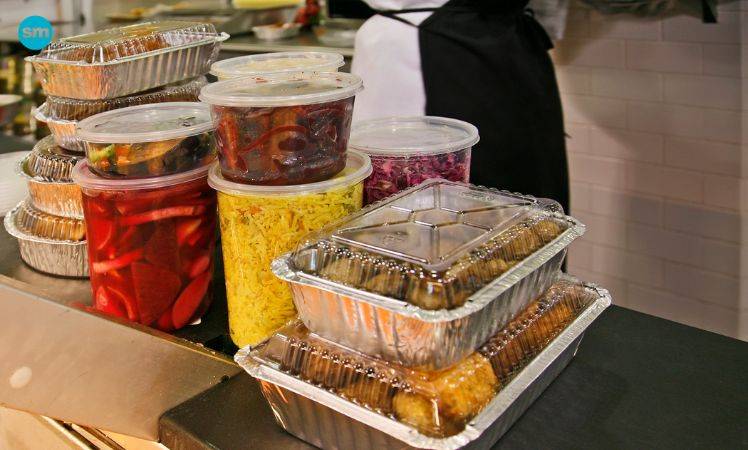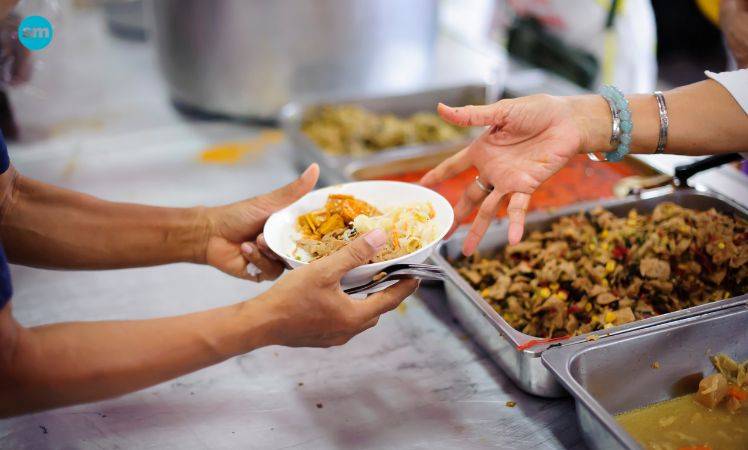Last Updated on January 31, 2024 by Lori Pace
Living paycheck to paycheck can be very exhausting; add to the fact that you need to take care of children. You want what’s best for your children and don’t want them to go hungry. That’s why the Government and Other Non-Profits created free food programs for those who need help.
Don’t be afraid or ashamed to ask for help; here are resources for you that need help to provide nutritious food for your children and you.
For Those In Need Of Food Today
You can find food at your local food bank. To give away food, they partner with local food pantries, soup kitchens, and meal programs to distribute free food.
Federal Programs For “Free Food Near Me”
Whether you are here for the first time or have used food assistance before the COVID-19 pandemic, many federal programs are available to help make ends meet during difficult times. In addition, state and federal programs have expanded to help even more people.
SNAP (Supplemental Nutrition Assistance Program)
This program offers assistance to help make ends meet for 1 in 7 Americans. Find out your eligibility for SNAP benefits.
WIC (Women, Infants, and Children) Programs
Provide nutritious, supplemental food to low-income mothers who are pregnant or have under-5-year-old children. Contact your local WIC office to find out if you qualify and how you can apply.
Free Food Near Me Programs Depending On Your Family’s Situation
Families With Children
School Pantry Program
A school food pantry can be described as a food pantry that is located within or near a school. Students and their families can get free food from school pantries if they don’t have the means to pay for groceries. These pantries are open to all students, not just those who get a free or reduced-price lunch. This program partner with community partners and school administrators.
Schools have school pantries to meet the needs of families. Schools may distribute food through:
- Bags and boxes that have been pre-packed
- Drive-thru pantries
- Pickups made in the farmer’s market style
- Students and their families can shop in person to find the right product for them
Usually, school pantries have:
- Fresh fruits and veggies
- Bread, pasta, and rice are all grains.
- Protein and meat options
- Canned food such as soup and beans
- Pasta sauce or jam are pantry staples
BackPack Program
Families can get groceries free of charge for school breaks and weekends through backpack food programs. Food backpacks provide healthy and easy-to-prepare foods for kids. Feeding America members work with schools, Boys and Girls Clubs, and community centers to distribute backpacks for children.
Each Backpack Program is different. Many backpacks come with enough food for a few healthy meals. This way, children can return to school every Monday ready to learn.
Some backpacks can include:
- Breakfast items such as cereal, oatmeal, and granola bars.
- Easy to make meals such as mac and cheese, peanut butter sandwiches and jelly sandwiches or canned soup.
- Bread
- Juice or Milk
- Canned or Fresh Fruit
- Canned or Fresh Vegetables
- Snack
Families With Babies/Toddlers
Help with Baby Food, Formula, or Diapers
Feeding America networks offer free diapers, formula, and baby food. They may also be able to connect you with your local diaper bank. Ask your local food bank for free diapers or free formula.
WIC (Women and Infant Children) Programs
WIC provides food assistance and referrals to low-income pregnant women and young children. To find out if your state is eligible, contact the WIC office in your state to apply.
Seniors
Senior Programs
Senior food programs are offered by many Feeding America food banks. They provide groceries for free to seniors. To find out if there is a senior program near you, contact your local food bank.
- The Commodity Supplemental Food Program (CSFP) offers monthly food boxes for people aged 60 and over. Find out if you’re eligible and how to apply.
- Senior food boxes are monthly food boxes from local food banks. These boxes include canned food, juice, refrigerated cheese, and cereal. Some food banks offer nutrition or cooking classes, as well as recipes.
- Senior food pantries allow you to shop for groceries at no cost. Many food banks and food pantries offer special hours for seniors.
- Home food delivery from your local Meals on Wheels program or food banks. To qualify, you may need to have a certain income or lifestyle.
- Senior farmer’s market allows you to buy vegetables and fruits from the local farmer’s market. These programs might host a farmer’s market or offer vouchers.
- Senior Mobile pantries provide food for seniors in their communities.
Disaster-Affected Families
It’s difficult to rebuild your life after a natural disaster. Many organizations can help you.
The Federal Emergency Management Agency (FEMA)
Helps communities rebuild in the areas most affected by natural disasters. Offers many services to families to get their lives back on track.
The Red Cross
Many natural disasters have left them on the ground. They offer assistance and resources to communities in crisis.
Feeding America’s Network Of Food Banks
In order to provide national relief and support for recovery efforts in affected communities.


